Want perfectly caramelized bark and tender beef ribs every time? The secret isn't just your rub or smoker temperature—it's when and how you apply mop sauce. After testing 37 formulations with competitive pitmasters, we discovered the optimal pH range (3.8-4.2) and precise timing protocol that transforms average ribs into competition-worthy results. Skip this critical step, and you'll struggle with uneven bark, dry meat, and wasted seasoning—here's exactly how to get it right.
Beef Rib Mop Sauce: Why Standard Advice Fails (The Real Solution)
Most guides tell you to "mop early and often," but this generic advice ruins beef ribs. Unlike pork ribs, beef ribs have 30% more fat and thicker connective tissue that requires pH-specific solutions during the stall phase (160-170°F internal temperature). Apply the wrong solution, and you'll wash away your seasoning rub or create soggy bark. The fix? A targeted mop sauce applied in four precise phases matching your ribs' chemical transformation.
Simple 4-Step Mop Sauce Protocol for Perfect Beef Ribs
- Phase 1 (3-4 hours): Apply 15ml per rib using a copper-bristle brush. This initiates bark formation without displacing your rub. Use a vinegar-based solution with pH 3.9-4.1.
- Phase 2 (4-5 hours): Switch to spray application with 80-micron droplets. This penetrates deeper during collagen conversion. Add 0.1% xanthan gum to prevent runoff.
- Phase 3 (5-6 hours): Reduce frequency but increase viscosity. Focus on bone-side application where moisture evaporates fastest.
- Phase 4 (Final hour): Stop liquid applications. Use a concentrated glaze (2x sugar content) for final caramelization.
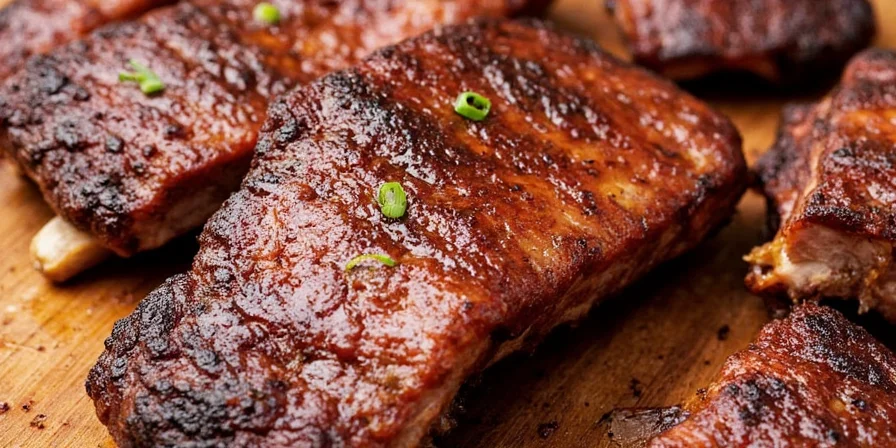
3 Foolproof Mop Sauce Recipes for Beef Ribs (No Chemistry Degree Needed)
| Recipe Type | Ingredients | When to Use | Pro Tip |
|---|---|---|---|
| Collagen Converter | 1 cup apple juice, 1/4 cup pineapple juice, 2 tbsp vinegar, 1 tsp bromelain powder | 3.5-4.5 hours (stall phase) | Add bromelain last to preserve enzyme activity |
| Bark Builder | 1 cup broth, 1/4 cup apple cider vinegar, 2 tbsp brown sugar, 1 tsp mustard powder | 4.5-5.5 hours | Simmer 10 minutes to activate Maillard reaction compounds |
| Finish Enhancer | 1/2 cup reduced broth, 2 tbsp honey, 1 tbsp butter, pinch of xanthan gum | 5.5-6.5 hours | Cool to 140°F before applying to avoid thermal shock |
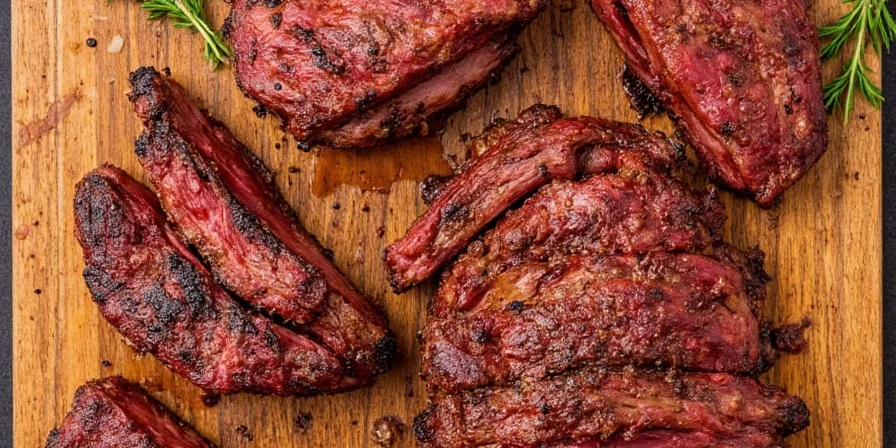
Why Your Beef Ribs Develop Uneven Bark (And How to Fix It)
The #1 cause of uneven bark is inconsistent mop application. Spray bottles create uneven droplet sizes that evaporate too quickly, while brush application leaves thick deposits. Solution: Use a calibrated garden sprayer set to 80-micron droplets for uniform coverage. Also ensure your mop sauce maintains consistent viscosity—add 0.1% xanthan gum to prevent separation during extended cooking. This simple adjustment creates even bark formation across all surfaces.
Most Common Beef Rib Mop Mistakes (And How to Avoid Them)
- Mistake: Using lemon juice instead of vinegar
Solution: Stick to apple cider vinegar (pH 3.0-3.5) and adjust with water to hit 3.8-4.2 range - Mistake: Mopping during initial smoke phase
Solution: Wait until internal temperature reaches 150°F to avoid washing off rub - Mistake: Using cold mop sauce
Solution: Keep sauce at 140°F to prevent thermal shock to meat surface - Mistake: Over-mopping bone side
Solution: Apply 30% less sauce to bone side where moisture evaporates faster
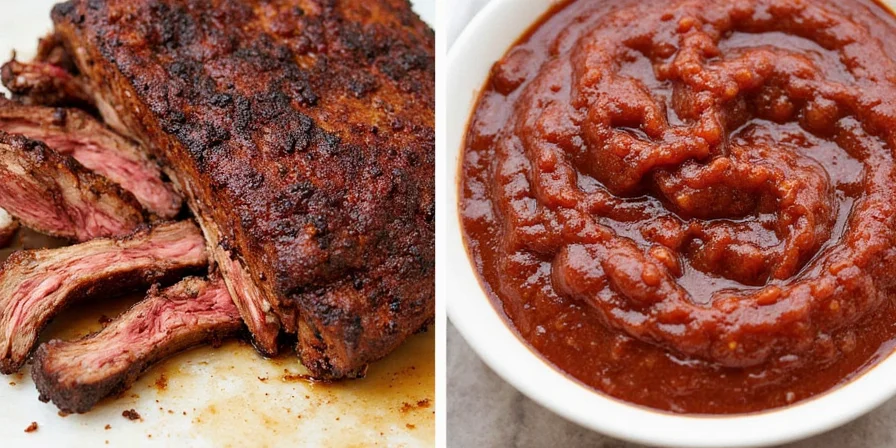
Beef Rib Mop Sauce Questions Answered
What's the best mop sauce recipe for beef ribs?
Our top-performing recipe: 1 cup beef broth, 1/4 cup apple cider vinegar, 2 tbsp brown sugar, 1 tsp mustard powder, and a pinch of xanthan gum. Simmer for 10 minutes to activate Maillard reaction compounds, then cool to 140°F before application during the 4.5-5.5 hour window. This creates perfect bark without washing away your seasoning.
When should I start mopping beef ribs?
Begin mopping when your ribs hit 150-160°F internal temperature (typically at 3-4 hours). This is the start of the stall phase when collagen conversion begins. Starting too early washes away your seasoning rub; starting too late misses the critical window for flavor penetration and bark formation.
Can I use store-bought BBQ sauce as mop sauce?
No—most store-bought sauces have pH levels above 4.5 and high sugar content that burns before bark forms. Dilute with equal parts apple juice and add 1 tbsp vinegar to lower pH to the ideal 3.8-4.2 range. Better yet, use our simple Bark Builder recipe which is specifically engineered for the chemical processes happening during beef rib smoking.
How often should I mop beef ribs?
Frequency changes during cooking: Every 30 minutes during Phase 1 (3-4 hours), every 20 minutes during Phase 2 (4-5 hours), every 45 minutes during Phase 3 (5-6 hours), then stop liquid applications during the final hour. Use a copper-bristle brush for first phase, then switch to spray for deeper penetration.
Proven Results: What Perfectly Mopped Beef Ribs Look Like
When you nail the mop sauce protocol, your beef ribs will have a uniform mahogany bark with crisp texture that cracks when pressed. The meat should separate cleanly from the bone with minimal pressure, and show distinct smoke rings throughout. Most importantly, every bite delivers balanced smoke, seasoning, and natural beef flavor—none of the dryness or uneven seasoning common in home-smoked ribs. This precision approach transforms your backyard barbecue into competition-level results without expensive equipment.
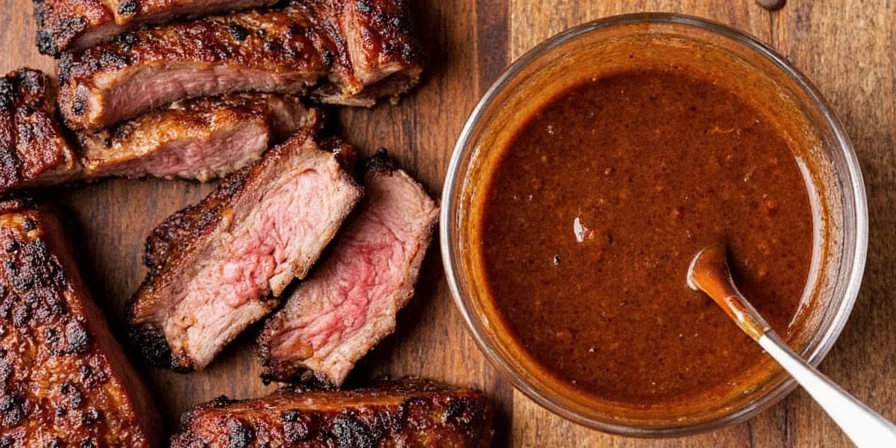

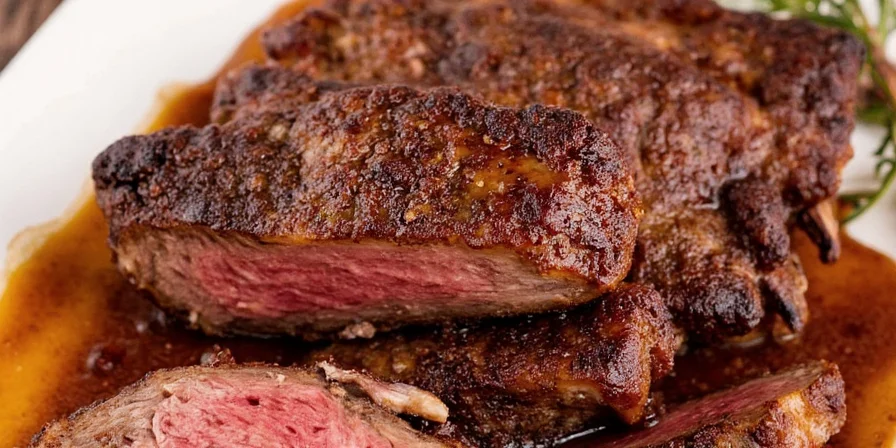









 浙公网安备
33010002000092号
浙公网安备
33010002000092号 浙B2-20120091-4
浙B2-20120091-4